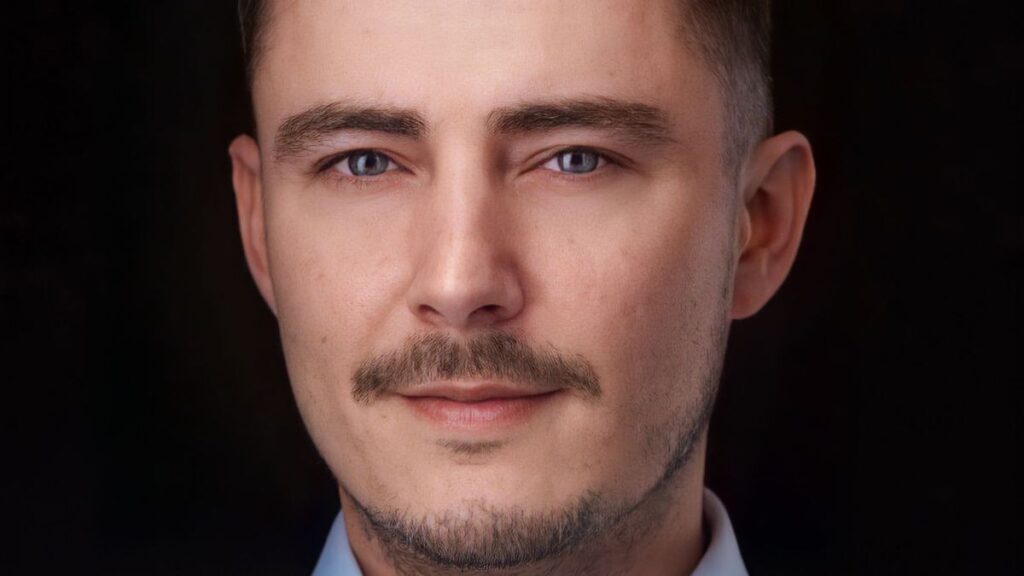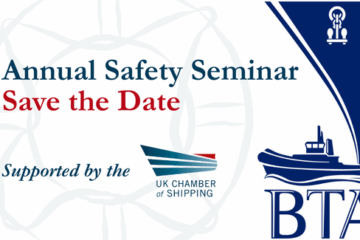Following the annual BTA Conference, Edwin Lampert from Riviera Maritime wrote an article on the presentation by Simwave’s Ryan Verhagen on how their simulators can significantly enhance emergency response scenarios. The BTA extends its gratitude to the speakers and Edwin for their expertise and professionalism, which contributed to the success of the conference.

New regulations, a shift towards alternative fuels and a larger volume of hazardous equipment and cargoes being shipped means crews need next-level emergency response training, delegates at this year’s annual British Tugowners Association Conference were told.
Chief commercial officer of maritime simulation provider Simwave, Ryan Verhagen, said the emergence of new hazards, ranging from combustible alternative fuels to lithium-ion batteries and dangerous chemicals means an increase of complexity and risks in fighting fires on board. “In practice, this will mean crew will not always have the right information, equipment, knowledge or capabilities to fight a newly ignited or developing fire,” said Mr Verhagen. “As a result, the choice will often be made to compartmentalise a fire and prevent its spread. This approach will make the affected ship even more dependent on the proper and efficient deployment of the FiFi tugs involved and crews will require knowledge and capabilities that go beyond mandatory STCW requirements.”
Mr Verhagen went on to detail how his company is collaborating with emergency response specialists REACT Emergency Response to develop the required next-generation training solutions in a paper themed Modern firefighting: Building future proof competencies for tugs.
A key aspect of this approach is the use of ultra-realistic simulation to immerse tug crews in lifelike emergency scenarios. Simwave’s industry-leading simulators can network up to eight separate bridge simulators along with engineroom and high-voltage systems to stage complex, multi-vessel emergency response exercises.
These virtual drills challenge tug crews to respond to realistic scenarios like communication between the supporting aids and the casualty. “The simulator confronts crews with many different types of fire scenarios,” said Mr Verhagen. “They need to interpret the situation correctly. Is the wind direction shifting? What information can they gather from the smoke patterns? We also focus on critical soft skills like communication.”
By pressure testing tug crews’ emergency response skills in a controlled but highly realistic virtual setting, Simwave aims to bolster crews’ ability to efficiently and effectively contain dangerous situations. “The simulator allows crew to practice key techniques like establishing stop lines and efficient boundary cooling.”
This in-simulator training is reinforced by extensive onboard practice sessions using state-of-the-art tools such as digital fire panels, artificial smoke generators, and laser-guided nozzles to create an extremely lifelike learning environment. “We sail on the vessel to various destinations, conducting training with multiple groups in their own work environments along the way,” said Mr Verhagen. “The focus is on further optimising their firefighting skills and running drills.” Conducting drills with the actual equipment on the tug itself, he said, builds muscle memory and confidence.
Simwave and REACT’s training begins with an online assessment to pinpoint each crew member’s individual knowledge gaps. That information is used to assign targeted e-learning modules, which leverage multimedia content such as videos of real-life combustion events. “Video is an integral part of our training approach. It’s critical that seafarers see vivid examples of what can go wrong,” said Mr Verhagen. “We have videos showcasing how lithium-ion batteries can ignite, what happens with different chemical elements. We even conduct laboratory tests to demonstrate various material behaviours.”
After each major training event, crews are re-assessed to measure skills progress, with the results used to fine-tune future instruction, something he says develops a virtuous cycle of continuous improvement. After attending training, tugs can access 24/7 remote assistance. Here, REACT’s expert firefighters can help crew assess situations and advise as needed.
Crucially, the entire training system is tailored to the specific tug, its equipment, routes and cargoes. “All our training solutions are completely custom-made,” said Mr Verhagen. “We start by conducting a thorough analysis of the situation on board. We examine the safety procedures, the condition and age of the safety equipment, the ventilation system, everything. Only then do we design a training package that’s precisely targeted to that particular vessel.”
Simwave and REACT are now looking at incorporating new capabilities into their offering including virtual reality firefighting scenarios. “The imperative is to keep pace with the increasing complexity of the hazards and to reach more of the tug workforce,” he said.
The article can be found on Riviera’s website here – https://www.rivieramm.com/news-content-hub/tug-crews-require-capabilities-that-stretch-beyond-mandatory-stcw-training-80783
With gratitude to Edwin Lampert and Riviera for granting permission to the BTA to publish the article.


